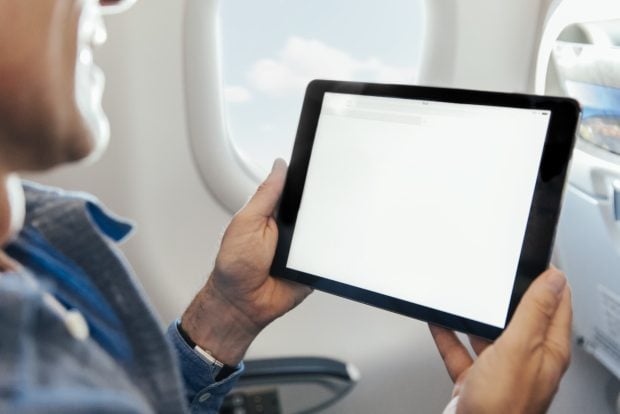Getting the balance right: public and civil service leaders on flexible working – during the pandemic and beyond

From IT issues and burnout to a renewed focus on employee wellbeing and a more diverse workforce – public service leaders outline the teething problems experienced in the move to remote working and how it has changed their organisations for good
Throughout the COVID-19 pandemic, government officials in many countries have been working remotely at least part of the time to keep themselves, their colleagues, and the public safe. In this, the last part of the 2021 Leaders’ Roundup series, public and civil service leaders tell GGF about the pros and cons of telework and what they see as best practice for managing new working arrangements going forward.
Diversifying public service talent in Australia

The Australian Public Service has transitioned in and out of remote working several times over the course of the pandemic in alignment with public health orders to keep Australians safe. One of the positives has been the adaptability and flexibility our people have demonstrated and their commitment to delivering high quality services regardless of their workplace. Additionally, embracing the concept of virtual teams across the country has allowed many departments to bring together talent from even more locations and backgrounds. Remote working brought some negatives as well. It stretched our IT systems and initially required significant workarounds and investment to ensure we could maintain services, privacy, and responsiveness. The lack of separation between work and home also resulted in longer hours and burnout for some staff.
Two years on our focus is now on returning to the office where it is safe to do so. Returning to face-to-face working in offices around the country is an important part of Australia’s return to normal and is the expectation for all of Australia’s public servants. We aim to retain some of those flexible working practices in a sustainable way – attracting and retaining a diversity of talent, while maintaining the elements that keep our workforce productive, support wellbeing and nurture a sense of connection.
Stephanie Foster, deputy secretary governance, Department of the Prime Minister and Cabinet, Australia
Balancing face-to-face interaction with remote work in Estonia

We have witnessed how many difficulties that were present in the beginning of the crises have been edged out and the technological developments along with evolving practices have paved the way to consistent flexible work. We see how remote working has allowed more flexible meetings and some officials have managed to excel in their time management. On the other hand, some officials are struggling with the other side of the coin as their schedules are filled to the brim and meetings fill up the whole working day. We have also witnessed how remote work has entangled the casual lines of communication and some managers find it difficult to maintain the customary level of cohesion in their teams. As a result, public sector managers sometimes need to reinvent the procedures in their teams, but by the end of 2021, most have reached a working balance between face-to-face interaction and remote work.
Taimar Peterkop, secretary of state, Estonia

Focus on the ‘holistic wellbeing’ of employees in Singapore
Most of our staff have been working from home by default since the onset of the pandemic. The challenge for us was to keep key digital services running and to roll out new ones, at a time when these became even more critical in the absence of physical touchpoints for citizens. A focus on the holistic wellbeing of our employees is more important than ever, and we have expanded engagement efforts and launched wellbeing assistance programmes to this end.
Chan Cheow Hoe, government chief digital technology officer and deputy chief executive, GovTech, Singapore
A better work/life balance in the UK

Like most other organisations, we rapidly adapted our working practices early in 2020, so that the majority of our staff were working from home. With over 4,300 office-based employees, it was a huge challenge but our amazing workforce have embraced the changes and we’ve maintained productivity. This showed us the scope for changing the way we work in the future and we’re now moving to a hybrid model where lots of people work from home, at least part of the time. There are many advantages to this new way of working, such as increased flexibility which allows for a better work/life balance for staff and a more diverse workforce.
Alison Pritchard, deputy national statistician and director general for data capability at the Office for National Statistics (ONS)
Flexible approach to flexible working in New Zealand
The Department for Internal Affairs Te Tari Taiwhenua (DIA) has supported flexible working for some time, so we were well prepared when most of our workforce had to shift to remote working during lockdowns. We had 80% of our people logged in and working from home at 9am the first day of our nationwide lockdown.

While flexible working is a standard approach for us, we hadn’t seen it on this scale before, so there were some challenges to overcome. Providing additional equipment and communication software ensured we were able to deliver our work and make things easier for our people.
In our latest organisation-wide staff survey, 96% of DIA employees felt that flexible working was important to them.
At the DIA, our flexible working is guided by four core principles:
We’re proud to support flexible ways of working that are positive for our people, teams and organisation and help us deliver services to New Zealand.
Paul James, secretary for internal affairs, government chief digital officer, and secretary for local government, New Zealand
Civil Service Commission, Philippines: prioritising its people
The pandemic has prompted institutions, including public sector organisations, to review processes and priorities. If there is one positive outcome of this pandemic, it is that prime consideration is now focused on human resource – on people. In re-thinking their structure and processes, organisations have to consider their people first before making changes or pursuing any activity to tide them through crises.
Since many agencies were not prepared for telecommuting or remote working, adjustments needed to be made in their processes and protocols. This coupled with the constraints brought about by quarantine measures, among other factors, has inevitably affected service delivery. Thus, the timely issuance of the Interim Guidelines on Alternative Work Arrangements allowed government offices to function remotely and deliver needed services.

A survey conducted by the Development Academy of the Philippines in 2020, revealed that the majority of government workers working from home believed they remained productive working at home during the quarantine period, barring connectivity problems. The survey also showed that organisational culture – particularly high levels of trust and support, good communication systems, and collaboration – plays a pivotal role in employee productivity when working remotely. Thus, it is important that adequate support mechanisms for employees be put in place such as (a) availability of laptop/devices (whether official or personal); (b) availability of reliable internet connection or cellphone signal; (c) secure remote access to records and documents; (d) clear protocols and communication or reporting lines within their work units and across other units in the organisation; (e) enhancement of competency levels of staff relative to digital platforms; and (f) care for their physical and emotional state.
Currently, the Civil Service Commission is in the process of developing guidelines on flexible work that will institutionalise the alternative work arrangement and will be applicable post-pandemic and through future events such as disasters due to climate change.
Alicia dela Rosa Bala, chairperson, Civil Service Commission, Philippines
We’d like to hear from you
What do you see as the positives and negatives of remote working in the public service? If you’d like to share, please comment below or email us at [email protected]
This is the final part of the Leaders’ Roundup series. Read the other articles:
Modernising government HR, co-created policies, and personalised services: public servants share their 2022 reform priorities
From response to recovery: public service leaders reveal their standout COVID-19 innovations
COVID-19 the catalyst: public service leaders explain how the pandemic has changed government
Taking pride: public service leaders share their greatest achievements of 2021























